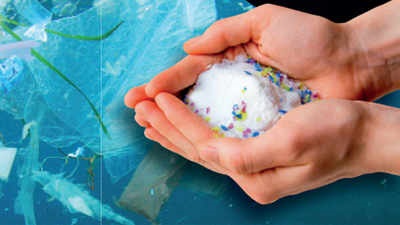Category : Plastic pollution | Location : Gujarat | Posted on 2021-08-03 23:39:37

Ahmedabad: The revelation that microplastics lurk amid edible salt comes as an eye-opener for the state government and salt producers. The researchers who recorded the findings are calling for improved refining processes to reduce microplastics in salt.
Polyethylene (78%) was the dominant microplastic pollutant, followed by polyester (19%). Polyvinyl chloride content was found too. “The packing material of salt was primarily composed of polyethylene. A few large-sized plastic fragments which were greater than 5mm were also observed in the samples,” the study said.
Approximately 16.2% and 15% of the microparticles that were analyzed in the crystal salt packets fall in the 500-1,000 micrometre and above 1mm size ranges. The 200-500 micrometre microplastic particles accounted for approximately 31.2% of the total particles, and 100-200 micrometre particles made up 37.7% of the total. “The common microplastic particles include fiber, pellet, and film,” the study said. The research involved Madras, Periyar, and Anna universities; Malankara Catholic College; and National Centre for Polar and Ocean Research.